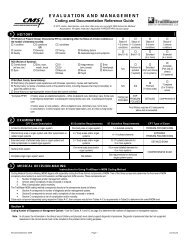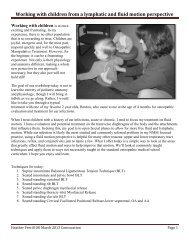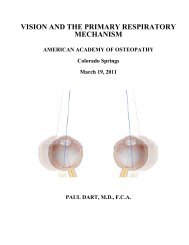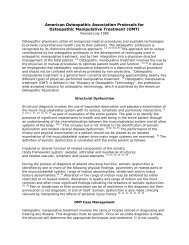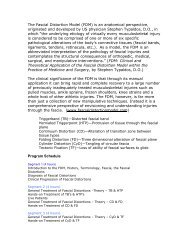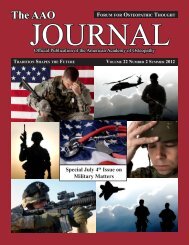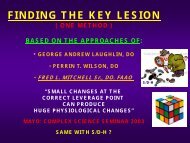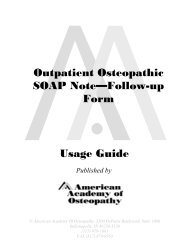Stiles - American Academy of Osteopathy
Stiles - American Academy of Osteopathy
Stiles - American Academy of Osteopathy
You also want an ePaper? Increase the reach of your titles
YUMPU automatically turns print PDFs into web optimized ePapers that Google loves.
� <strong>Stiles</strong>’ AGR for LOWER HALF OF THE BODY:<br />
� For the lower half <strong>of</strong> the body start with a standing flexion test. Are the lumbar<br />
paravertebral muscles symmetrical? Does one PSIS ride superior?<br />
� Next perform a seated flexion test. Does the lumbar spine show asymmetry <strong>of</strong><br />
motion and/or muscle volume? Does one PSIS ride superior? Is the PSIS shift<br />
stronger for seated than standing flexion? If so look to the lumbar spine,<br />
innominates, and/or sacrum for the SGR.<br />
� If the lumbar paravertebral muscles demonstrate asymmetry in both standing<br />
and seated flexion use the same test as that performed for the thoracic spine<br />
(sidebending from the shoulder). Is one side <strong>of</strong> the lumbar spine restricted? Can<br />
you localize a segment that has a diagonal hard end-feel when the regional<br />
restriction is maximized?<br />
� Now use the same sidebending to test the sacrum. Is sacrum restricted? Did one<br />
PSIS ride superior in the seated flexion test? Evaluate sacral mechanics.<br />
� If the PSIS rides superiorly on the same side in both standing and seated<br />
flexion, it suggests that the pelvis may be the area <strong>of</strong> greatest restriction.<br />
Likewise compression from the shoulder may lateralize restriction to the pelvis.<br />
Evaluate for the nature <strong>of</strong> the restriction.<br />
� If the standing flexion PSIS shift is stronger than the seated, look to the leg on<br />
that side. An additional clue that it might be the leg: diffuse unilateral<br />
paravertebral muscle tightness.




